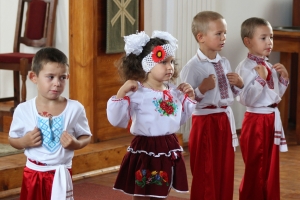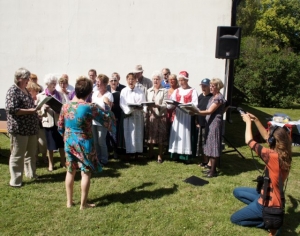In general, it can be said that old age remains in the outer cultures of the Nordic culture; in Norway, in detached parts of Dalarna, in the Finnish villages and not least on the Estonian islands inhabited by Swedish residents. The Swedish specialty was maintained here in the culture by heritage and tradition. From Dagö many of these traditions followed to Gammalsvenskby.
“At Dagö, during the joint work it should never have been missing a bagpipe, so that if only two were present at the work, one of them played bagpipes while the other was working,” wrote the researcher Carl Russwurm at 1850- talk about older times.
The musician and music researcher Stig Norrman has been able to demonstrate that there are elements of bagpipe lures buried in the melodies that were later played by gamblers in Gammalsvenskby, but these mostly used the violin. Tagelharpan was brought to Gammalsvenskby in 1782, but it was the next disappeared in the late 19th century. John Hoas, who emigrated to Canada in 1913, built a tagel harp for a model that was in the wife’s (Sigalet) family.
Among the gamblers in the village are the bellman Mats Magnusson Kotz (1756-1836), the village governor Andreas Hindriksson Sigalet (1844-1913) and his sons – the family emigrated to Canada in 1889, the bellman Simon Simonsson Kotz (1862-1946) and his brother Hindrik Simonsson Kotz (1869-1948) and his son Gustav Hindriksson Kotz (b. 1914) and village school teacher Gustav Pettersson Utas (1891-1968). These were mainly pole shoes and rolls with German origin that were played in the village.
Even several members of the Mutas family were already mentioned in Gammalsvenskby as unusually musical, but it was on Gotland that the accordion virtues Dolle and Hans Mutas came to flourish.
During the Second World War, the youngsters Petter Mattiasson Norberg (b. 1921) made a basic violin and balalaika, Johannes Pettersson Knutas (b. 1919) on the first violin and balalajka and his brother Andreas Pettersson Knutas in 1921) on other violin and balalajka, known as talented music group in Gammalsvenskby. They were hired as gamblers for weddings in the village, but also in German and Russian neighboring villages.




